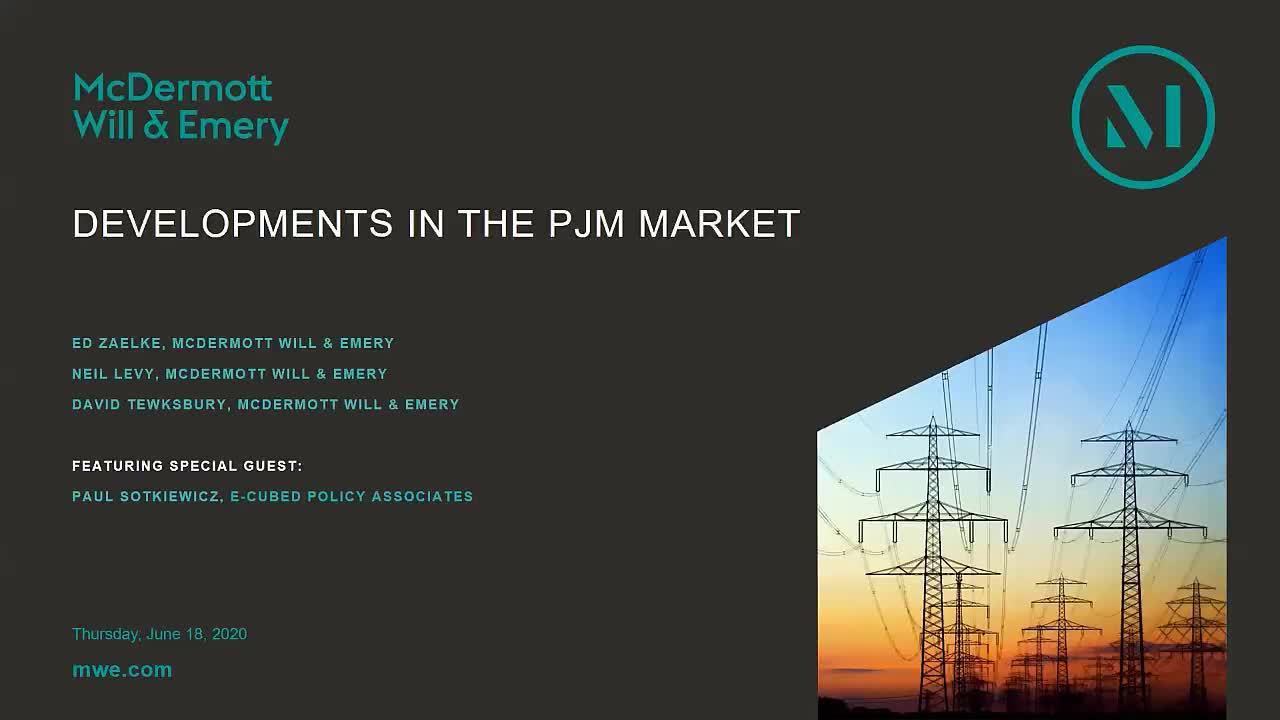On June 18, 2020, McDermott partners Neil Levy and David Tewksbury were joined by Paul M. Sotkiewicz, PhD, of E-Cubed Policy Associates, LLC, to discuss recent developments in the markets operated by PJM Interconnection (PJM).

Below are key takeaways from this week’s webinar.
- In December 2019, the US Federal Energy Regulatory Commission (FERC) issued an order requiring PJM to expand its Minimum Offer Price Rule (MOPR). Under the expanded MOPR, a capacity resource that receives a state subsidy will be subject to a minimum offer floor price in PJM’s capacity auctions, unless it is entitled to one of the exemptions set forth by FERC.
- The expanded MOPR is not expected to have significant impacts on the results of PJM’s capacity auctions, particularly in the near term. There are at least three reasons for this: First, there are various exemptions to the expanded MOPR, including, but not limited to, exemptions for existing renewable resources, as well as for resources used for self-supply. Second, default offer floors are determined based on the technology of the resource, and certain of these default offer floor prices are low enough to allow resources to continue to clear in PJM’s capacity auctions. Third, and most importantly, a resource can submit offers below the default minimum offer floor price if it can demonstrate that its costs are below the default price.
- FERC acted relatively quickly on requests for rehearing of its December 2019 order, and issued an order on rehearing in April 2020. Petitions for review of FERC’s orders are pending in the US Court of Appeals for the Seventh Circuit and the US Court of Appeals for the District of Columbia Circuit, and are expected to be consolidated in the Seventh Circuit.
- PJM has made two compliance filings in response to the December 2019 and April 2020 orders. Given the speed with which FERC acted on rehearing, there is the possibility that FERC could also act quickly on the compliance filings. PJM has indicated that it intends to hold the Base Residual Auction for 2022/2023, which was originally scheduled to take place in May 2019, six and a half months after FERC issued an order accepting the compliance filings.
- Various states are considering opting out of PJM’s capacity markets by using the Fixed Resource Requirement (FRR) alternative. The FRR alternative could give state regulators more control over the mix of resources in the state, but has historically resulted in higher costs for ratepayers in the FRR states.
- FERC also recently approved modifications to PJM’s rules to provide additional compensation for operating reserves. At the same time, FERC also required PJM to adopt a forward-looking, rather than historical, methodology to calculate the energy and ancillary services offset (E&AS Offset) that is used in the capacity market. Notwithstanding the expected increase in energy and ancillary services revenues as a result of the operating reserves rule change, using a forward-looking methodology may not result in significant changes to the E&AS Offset [...]
Continue Reading
read more

 Subscribe
Subscribe
